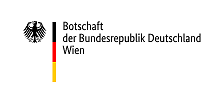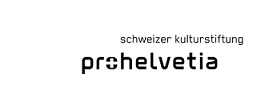Mining Photography
The Ecological Footprint of Image Production
Opening: Wed, 08.03.2023, 19:00
Just how sustainable is the ‘eternal moment’? To what extent does the production of photographs contribute to man-made climate change? MINING PHOTOGRAPHY. The Ecological Footprint of Image Production looks at the history of the key raw materials involved in photography: how they are mined originally, how they are disposed of, and the impact on our environment. A history of materials in five acts!
At the exhibition, historical photographs, contemporary artistic positions and interviews with experts tell the story of art photography from the perspective of its industrial production. Where, for example, did the copper come from that was used for Hermann Biow’s famous daguerreotype of Alexander von Humboldt? Showcasing 170 works, the exhibition impressively illustrates how, ever since its invention, the medium of photography has contributed to man-made changes in nature – and continues to do so to this day. From the very outset, the production of photographs has depended on the extraction and exploitation of natural raw materials. In the 19th century, salt, copper and silver were used to create the first images on copper plates and for salt prints. Following the advent of silver gelatine prints, the photography industry became the most important consumer of silver in the late 20th century, accounting for more than half of global consumption. Today, in the age of smartphones and digital photography, image production relies on rare earths and metals such as coltan, cobalt and europium. The storage of images and their dissemination also produce large quantities of CO2.
The exhibition MINING PHOTOGRAPHY tracks down individual trade and production chains. How has the actual materiality of photographs, frequently invisible to the naked eye, changed over the decades? The five exhibition sections follow the trail of the materials used in photographic production: the copper for daguerreotypes; the fossil fuels such as coal and bitumen for printing processes; the silver for the silver gelatin prints in widespread use in the 20th century; the paper as a backing material; and the rare earths for the ever more compact cameras and smartphones. Interviews with M. Susan Barger (restorer), Hans Joosten (biologist), Hannah Pilgrim (activist), Rainer Redmann (chemist), Katrin Westner (mineralogist) and Katherine Mintie (art historian) examine the ecological footprint of materials and their extraction from a variety of perspectives in both research and science.
CURATORS
The exhibition is curated by artist, author and curator Boaz Levin and by Dr Esther Ruelfs, Head of the Photography and New Media Collection at MK&G.
ARTISTS
Ignacio Acosta, Eduard Christian Arning, Lisa Barnard, Hermann Biow, F&D Cartier, Klasse Digitale Grafik – HFBK Hamburg (Mari Lebanidze, Miao ‘Cleo’ Yuekai, Leon Schweer und Marco Wesche), Oscar und Theodor Hofmeister, Susanne Kriemann, Honoré d’Albert de Luynes und Louis Vignes, Jürgen Friedrich Mahrt, Mary Mattingly, Charles Nègre, Optics Division of the Metabolic Studio (Lauren Bon, Tristan Duke und Richard Nielsen), Madame d’Ora, Lisa Rave, Hermann Reichling, Alison Rossiter, Daphné Nan Le Sergent, Robert Smithson, Anaïs Tondeur, James Welling, Noa Yafe, Tobias Zielony
A joint venture between Museum für Kunst & Gewerbe Hamburg [Museum for Arts and Crafts Hamburg] and KUNST HAUS WIEN.
With the kind support of the German Embassy Vienna and Pro Helvetia. Schweizer Kulturstiftung.








